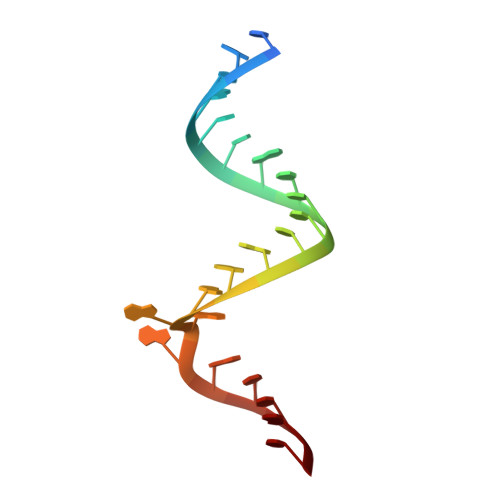Differential Selectivity of Natural and Synthetic Aminoglycosides towards the Eukaryotic and Prokaryotic Decoding A Sites.
Kondo, J., Hainrichson, M., Nudelman, I., Shallom-Shezifi, D., Barbieri, C.M., Pilch, D.S., Westhof, E., Baasov, T.(2007) Chembiochem 8: 1700-1709
- PubMed: 17705310
- DOI: https://doi.org/10.1002/cbic.200700271
- Primary Citation of Related Structures:
2O3V, 2O3W, 2O3X, 2O3Y - PubMed Abstract:
The lack of absolute prokaryotic selectivity of natural antibiotics is widespread and is a significant clinical problem. The use of this disadvantage of aminoglycoside antibiotics for the possible treatment of human genetic diseases is extremely challenging. Here, we have used a combination of biochemical and structural analysis to compare and contrast the molecular mechanisms of action and the structure-activity relationships of a new synthetic aminoglycoside, NB33, and a structurally similar natural aminoglycoside apramycin. The data presented herein demonstrate the general molecular principles that determine the decreased selectivity of apramycin for the prokaryotic decoding site, and the increased selectivity of NB33 for the eukaryotic decoding site. These results are therefore extremely beneficial for further research on both the design of new aminoglycoside-based antibiotics with diminished deleterious effects on humans, as well as the design of new aminoglycoside-based structures that selectively target the eukaryotic ribosome.
- Architecture et Réactivité de l'ARN, Université Louis Pasteur, Institut de Biologie Moléculaire et Cellulaire, CNRS, 15 rue René Descartes, 67084 Strasbourg, France.
Organizational Affiliation:

















